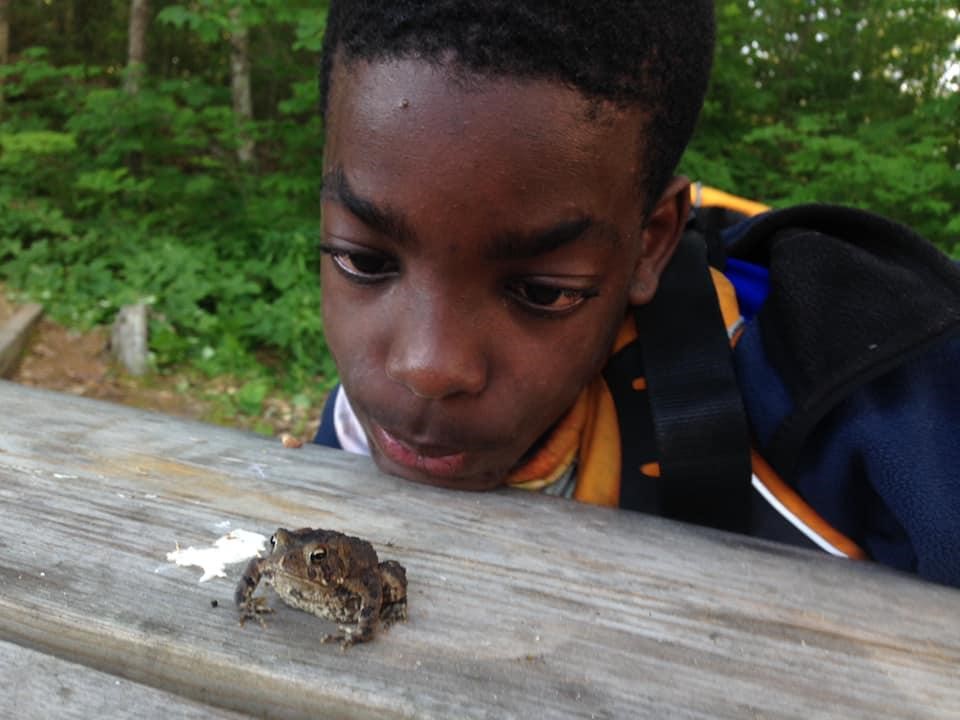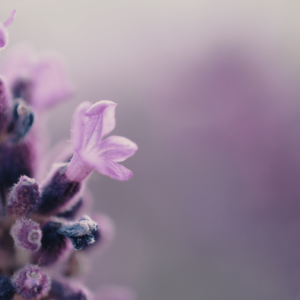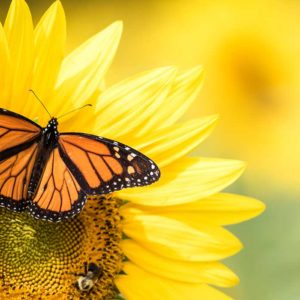NatureHood Partner Profile: Finding a “Sit Spot” Activity with Trails Youth Initiatives
This is a part of an ongoing Nature Canada series, profiling our NatureHood program partners. We’re pleased to welcome Trails Youth Initiatives as a new local partner in the NatureHood program! Through local partners, NatureHood offers programming built on nature exploration, outdoor education, and celebration of nature’s nearby wonders.

Trails Youth Initiatives (Trails) serves kids starting at the vulnerable age of 12, offering opportunities to those facing barriers to success which could include single-parent families, recent immigrant families, and exposure to a variety of risk factors.
There are so many great moments of discovery with the kids each year. From sitting cross-legged on the grass for the first time, to seeing a starry night sky for the first time. From skating on a frozen lake to watching the kids set goals and reach them—it is amazing to have a front-row seat as they explore and discover nature. Participants stay in the program for four or more years, allowing for long-term and sustainable relationships.
Because of COVID-19, however, youth are more marginalized and isolated than ever. Low-income families are disproportionately affected by the pandemic and Trails Youth Initiatives are seeing amplified food insecurity, declines in mental health and precarious living situations.
Access to green space
For racialized youth, who have little access to green space and outdoor skills development, this program is essential to inspire responsible outdoor participation for the next generation. Trails offers a year-round program for Toronto’s youth from under resourced communities at its natural environment facility in the periphery of the Greater Toronto Area, and creates opportunities for kids to engage with nature in urban park settings. This summer in particular, kids will have a chance to learn introductory outdoor skills at parks close to their homes and understand that they can enjoy the lifelong benefits of nature wherever they are.
Building nature enthusiasts and advocates
At Trails, nature is used to teach skills such as leadership, teamwork and confidence, as well as improve physical and mental well-being. Youth connect to nature and learn skills related to hiking, swimming, fishing and camping. There is a strong emphasis on improving well-being through mindfulness exercises in nature spaces and outdoor experiences often begin with a meditative connection.
Through nature-based programming, each participant will also spend time learning about plants and animals in their surrounding environment and will learn to practice environmental stewardship. Because the participants return year after year to Trails (for four years) there is time to develop and master both technical and safety skills; thus, setting up participants to become lifelong outdoor enthusiasts and advocates for nature.
The Trails program is unique in that participants are engaged in the program long term. The consistency in coming to the program once a month for four years and the focus on transference, allows participants to build a positive engagement with the Trails community, the outdoors, their peers and their authentic selves.
Example activity: Finding a “sit spot”
At Trails, youth are encouraged to find a “sit spot” in nature as a way to connect to themselves and their natural surroundings. A sit spot experience can be used to reflect on thoughts and connection to place, as well as to use observation skills and experience to stimulate curiosity and critical thinking. Ready to try it yourself?
Step 1: Begin by finding a relaxed, comfortable position. You could be seated on the ground, on a log, or some other natural seat. Ground yourself by noticing your body, and tuning into your breath. In a journal or on a piece of paper, write down or sketch some of the thoughts you are having about your body and your thoughts. Avoid judgement of yourself, there are no wrong responses.
Step 2: Next, notice your senses. Make a point of tuning into your field of vision and what you see in your periphery. Actively listen to the sounds around you. Take a few deep breaths and notice what you smell. Check in with your body and notice the temperature and textures of where you’re sitting. This helps pull your brain into the moment and gives awareness of the wild around you.
Step 3: Once again, jot down or sketch your observations in your sit spot. This can include, but is not limited to: bird behaviours, the shape of a plant leaf, new buds emerging on the trees, the angle of light at that time of day or the direction of the wind at that moment, etcOur thanks to Melissa at Trails Youth Initiatives for sharing. You can learn more about Trails on their Facebook and Instagram.



